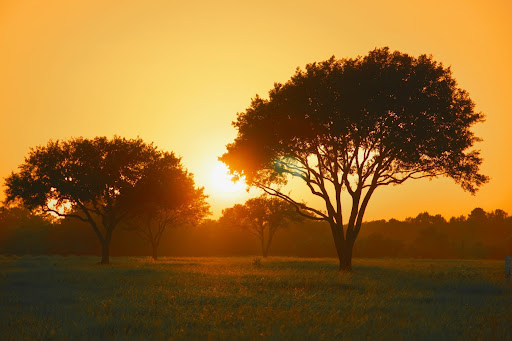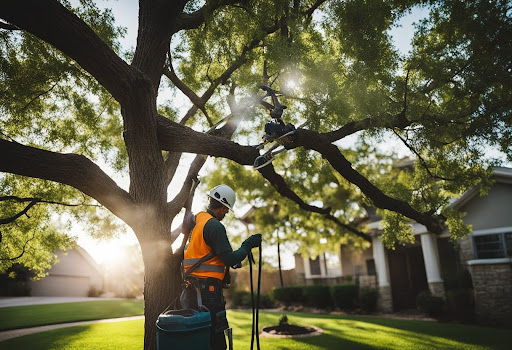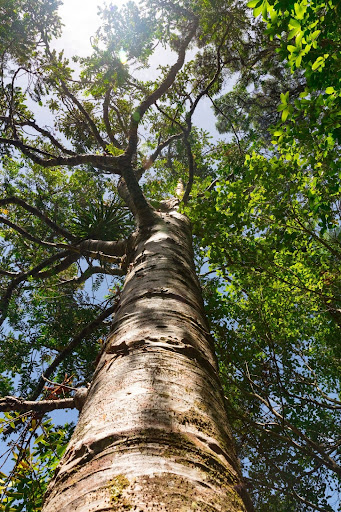
Date October 08, 2020
Category
We know all about the types of serious storms that we can get here in the Dallas-Fort Worth metro area. Unfortunately for tree owners like you, our bad storms come complete with heavy winds that often cause tree emergencies such as fallen tree limbs and fallen trees at your house or commercial property. As a local homeowner or commercial property owner, what tree care tips should you follow to prepare your trees to withstand storms with heavy winds and best prevent your trees and their limbs from falling?
Whether you are just planning a landscape or have mature trees on your property, our ISA Certified Arborists are here to help you prepare for our next big heavy wind storm. Read our tips on which trees are most likely to fall, how to select the most wind-resistant trees when planning a new landscape, and how to prepare your trees to withstand storms. After you’ve learned this important tree care information, discover our emergency tree services that we offer Dallas-Fort Worth metro area homeowners and commercial property owners such as fallen tree removal in the event the worst-case scenario happens on your property after a heavy wind storm.
Which Types of Trees Are Most Likely to Fall During a Heavy Wind Storm?
While many different types of trees can fall during the types of heavy wind storms we get here in the Dallas-Fort Worth metro area, there are certain known tree characteristics that are known to make a tree more likely to fall. The tree attributes that make trees more likely to fall in heavy wind storms include:
- Trees that are on a property that is five years old or less. This is because these trees’ root structures will have likely sustained damage from the relatively new structure construction on the new property.
- Trees that remain in areas that have been recently cleared. This is because the remaining trees have not yet adjusted to their new open area. This type of fallen tree susceptibility is very common in areas where new roads have recently been built.
- Trees that are planted in new, gravelly soil that is not strong enough to hold tree roots down during heavy wind storms.
- Trees that have any degree of tree rot in their roots, stems, or branches.
- Lopsided trees.
- Trees that have many small branches and twigs, which creates a sail effect that is often the result of improper tree pruning techniques.
Selecting the Best Trees to Withstand Storms
If you’re just planning a landscape, then you have a great opportunity to select trees that will be storm-resistant. We recommend oak trees whenever possible because these majestic beauties are known for lasting through storms with heavy winds. That’s why so many oak trees in our area have been living for centuries!
If oak trees aren’t a possibility for your landscape or property, then instead select trees that:
- Have straight roots.
- Have one dominant trunk.
- Have branches that grow spaced apart from each other.
Tree Care Tips for Your Existing Trees
If you already have mature trees on your property, we recommend you follow these important tree care tips to make your trees as likely as possible to withstand storms with heavy winds so that they don’t fall over:
- Properly prune the tree between mid to late fall and early spring to prepare it for summer storms.
- If the tree is over 15 feet in height, use a professional tree services company like ours which is staffed with ISA Certified Arborists for tree pruning.
When pruning trees, there are some important tree care tasks to perform. These include:
- Shortening overly-long tree branches.
- Removing tree branches that have cracks in them and are therefore more likely to break during a heavy wind storm.
- Removing tree branches that hang over houses or other structures on your property, cars, or pathways that people walk on.
- Shortening branches that are of the same diameter – or thicker – of the tree’s trunk.
- Thinning out the outer edges of the tree’s canopy.
- Removing or shortening low-lying tree branches.
- Removing all tree limbs that have rot in them.
- Pruning trees so that their branches have good tree angles at 10 o’clock or 2 o’clock.
- Pruning branches that are rubbing together.
- Contact your power company if you have any tree branches in or near power lines. Your power services company will need to perform tree pruning when limbs intersect or are very close to power lines.
We Offer Emergency Tree Services if You Ever Need Fallen Tree Removal
We know all too well that despite your best efforts and precautions to prepare your trees for upcoming storms, it’s possible you’ll need emergency tree services in the future. If a heavy storm causes tree limbs to break and fall, or for an entire tree to fall down, you’ll need the help of emergency tree services experts like us to stabilize the situation and keep the people and structures on your property safe.
As a professional tree services company providing emergency tree services to the Dallas-Fort Worth metro area, we’ve responded to several tree emergencies. We can come to your property if you sustain storm damage to your trees and perform fallen tree removal. We can also perform the emergency removal of tree limbs that are breaking or falling and posing imminent threats.
Remember, if you have a tree that has fallen during any downed power lines, assume those power lines are live and can electrocute you. Never go near the power lines, and instead immediately call 911 or the emergency number for your power service provider to have the downed power lines immediately addressed. Wait inside your property and keep all people away from the downed power lines until they have been professionally addressed by your power services provider.
We’re Here When You Need Us the Most
While we sincerely hope that you never experience a storm-damaged tree or need our fallen tree removal services, we’re here for you in your time of need. If you need emergency tree services after a storm with heavy winds has significantly damaged a tree on your property or caused it to fall, call us immediately for help. We can be reached at tel:(817) 592-6846.
To learn more about What Are the Best Times to Prune?, call our Argyle and Southlake based teams
at tel:(817) 592-6846 or send us a message.
We’re a little different than the average tree services company.
Learn more about TreeNewal’s ISA Certified Arborists!
Our Dallas/Fort Worth-based tree doctors can explain how sustainable tree care services add more value to your bottom line.
Healthy trees, healthy lives.








